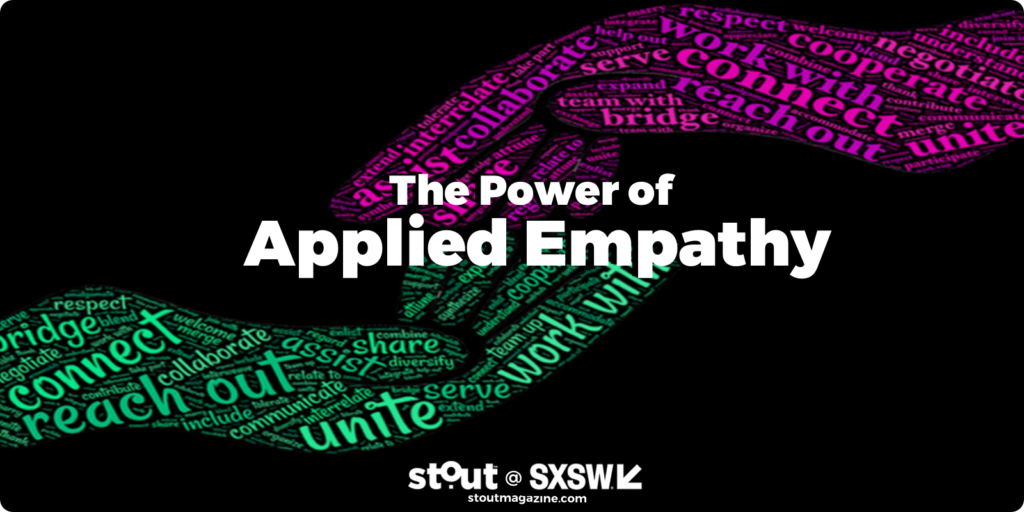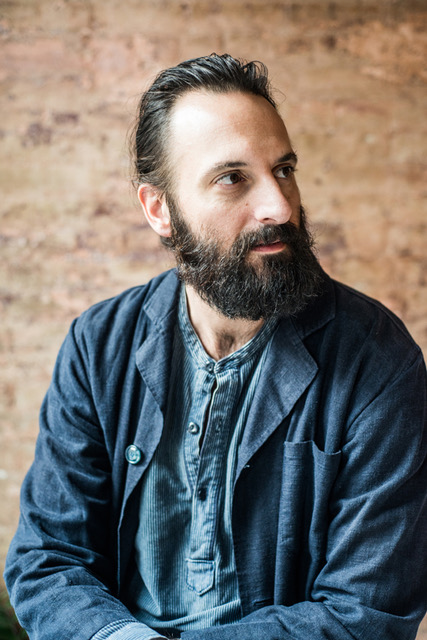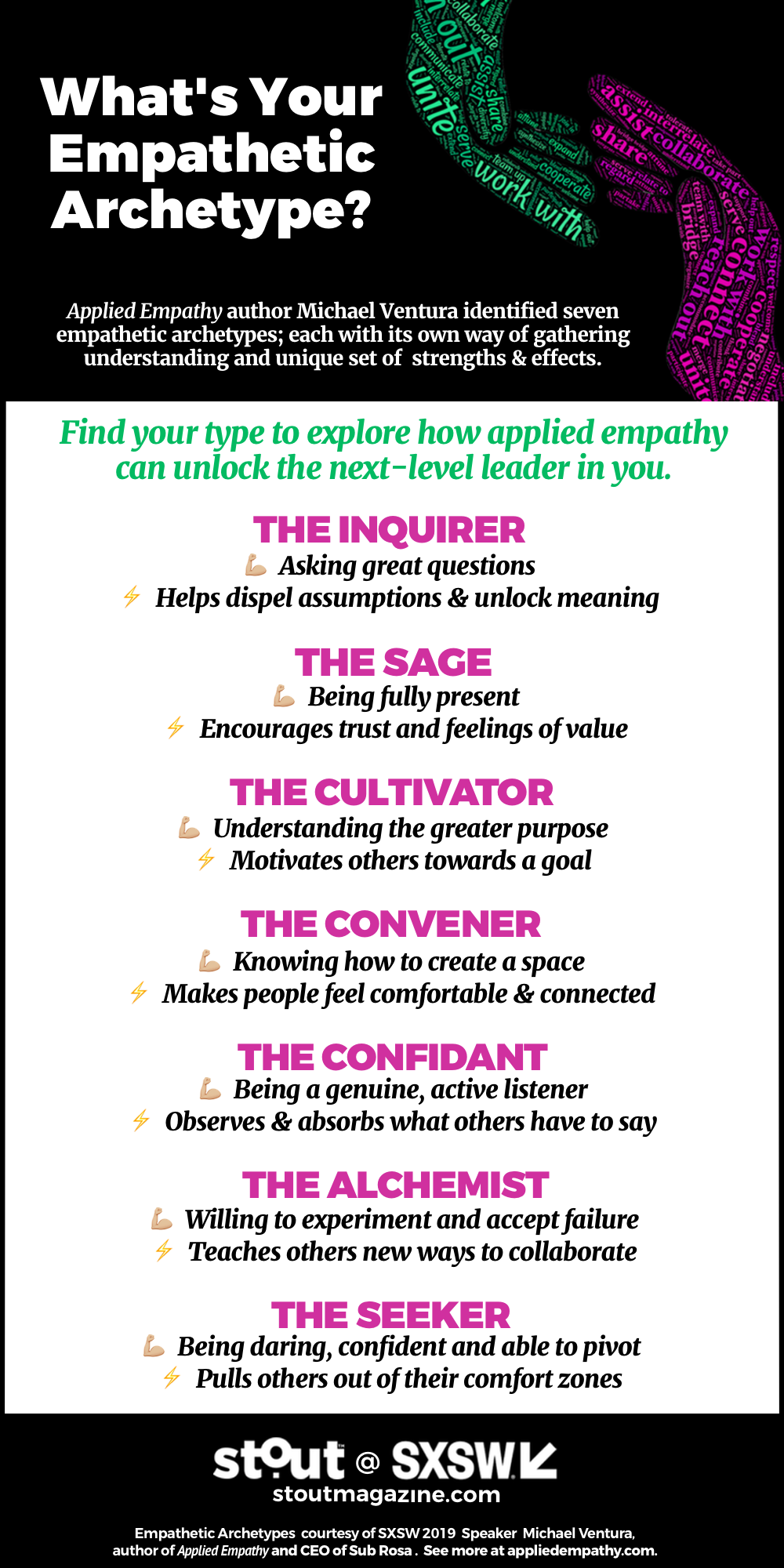
SXSW Deep Dive: What is Applied Empathy?
And why is it so critical for leaders to understand?
Read on for actionable insights from Michael Ventura’s SXSW 2019 Crash Course On Empathy & Leadership, part of our year long series of Stout Takeaways from SXSW.

Founder & CEO of Sub Rosa, Author of Applied Empathy
Michael Ventura of Sub Rosa is a popular man these days.
Empathy is the hot new language, and Ventura is fluent in it. From Princeton to West Point to a slew of both start-ups and established organizations, he has been tapped to share his insights.
One of his first tasks? Actually clarifying what empathy is — and isn’t. As Ventura explains it, “People hear ’empathy’ and think of being nice, sympathetic or having compassion.” While those may be side effects of empathy, they are not the real deal.
According to Ventura, there are actually three kinds of empathy:
- Affective Empathy. This is emotional empathy, where a person thinks, “I know how you feel”.
- Cognitive Empathy. This is intellectual empathy, where you step out of your own shoes to experience someone else’s perspective.
- Somatic Empthy. This is physical empathy, where a person actually takes on the pain habits of another, like “sympathy pregancy”.
It is the second form, cognitive empathy, that Ventura focuses on. But he has taken it a step further, coining the phrase “applied empathy” to highlight an additional level of empathy that is active, not passive. It requires being self-aware , taking time to check one’s own perspective in order to gain a richer, deeper understanding of others. With applied empathy, you become aware of not only your own biases and tendencies, but develop actionable insights into what motivates others and makes them tick.
As a leader, this type of empathy is invaluable. But gaining it — and changing a culture using it — means asking yourself, “Am I willing to encounter and accept new truths?”
If we want to be able to empathize with others, we have to learn how to empathize with ourselves first.
— Michael Ventura, Founder & SEO of Sub Rosa
Change starts with calibration.
Before diving right in, Ventura recommends a deeply honest sizing-up of yourself and your environment. In his process, he carefully evaluates these four key areas:
▪ Objective vs. Subjective Solutions: Does your organization live and die by metrics? Then you are looking at the objective end of the scale, where ideas and decisions are rooted in fact. Are ideas encouraged, no matter how crazy they seem at first glance? You’re operating on the subjective end of the scale.
▪ Top-Down vs. Bottom-Up Cultures: How is leadership carried out — by order, or by consensus? Ventura offers the examples of the military (top-down) and a start-up (bottom-up). It’s possible to evolve from one to the other, but you need to know where you are starting from.
▪ Human-Centered vs. Ecosystemic Thinking: As with the other questions, there’s no wrong answer here. Human-centered refers to focusing one person or category, such as an end user. Ecosystemic, on the other hand, takes into account all the players you’re engaging with. The key is to be thoughtful in the moment and ask yourself, “Which one of these are we solving for?”
▪ Passive vs. Proactive Leadership: This boils down to how much change people actually want. If you’re dealing with someone who is counting the months until retirement, they may not be interested in rocking the boat or making anything more than cosmetic changes. An expanding start-up, however, may be much more open to going all-in on radical adjustments.
This calibration is the heart of applied empathy’s power. The success of your initiatives depends in large part on how well you, your team, your organization and/or your clients align on all four of these items. If everyone is in agreement, moving forward won’t require as much negotiation or finesse. However, if the alignment is off, knowing where you stand versus where the rest of your environment sits is invaluable.
For example, you may be a subjective solutions person, but if your boss sits high on the objective scale, it will take some carefully tailored repackaging of your natural impulses to sell an idea through. It’s all about understanding what others need and want — and using that to guide your interactions.
If that last bit gives you pause, you’re not alone. Ventura is careful to point out that empathy itself is neutral; it’s in the application that it becomes positive or negative. In fact, he notes that sociopaths are actually excellent at empathy — they have to know you in order to manipulate you. There is definitely a responsibility that comes with gaining this depth of knowledge about others.
This is how you show up for people.
Applied empathy is no easy task, and Ventura warns that, “it will slow things before it speeds things up”. But if you stay with it, and keep practicing, the rewards are great. With applied empathy, says Ventura, decisions become understandable and inclusive, teams are motivated and collaborative, and organizations are flexible and responsive.
That kind of benefit is exactly why the U.S. Army brought him to West Point, why Princeton added his course — and why anyone interested in becoming a better leader should learn more. Ventura’s book, Applied Empathy: the New Language of Leadership, is a great place to start.
For more Stout insights from SXSW’s gathering of global thought leaders, check out our SXSW archive.
A #STOUT Bonus Takeaway on Applied Empathy!
Ventura has identified seven empathetic archetypes; each with its own way of gathering understanding. This where diversity comes into play, as they all bring unique strengths (and weaknesses) to the table. Which type are YOU?

What’s your empathetic archetype?
